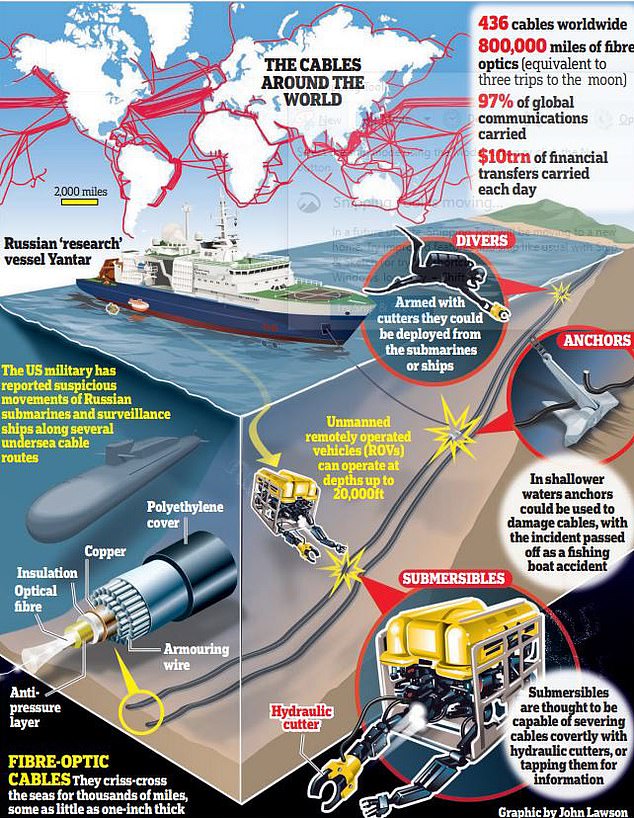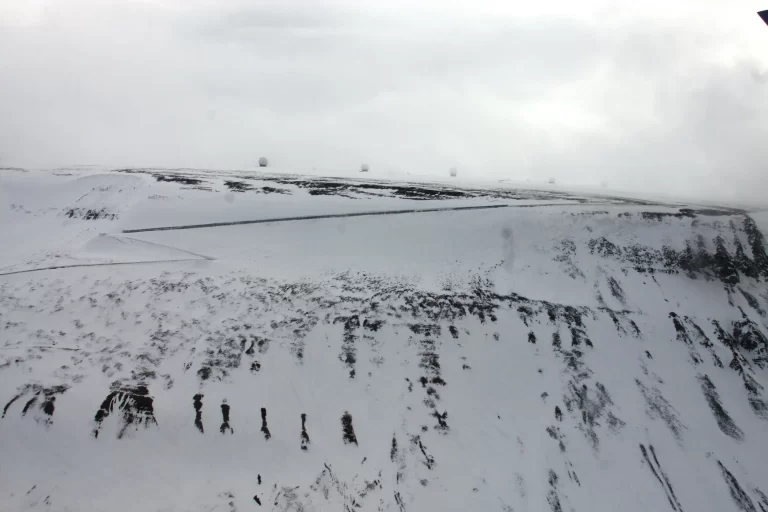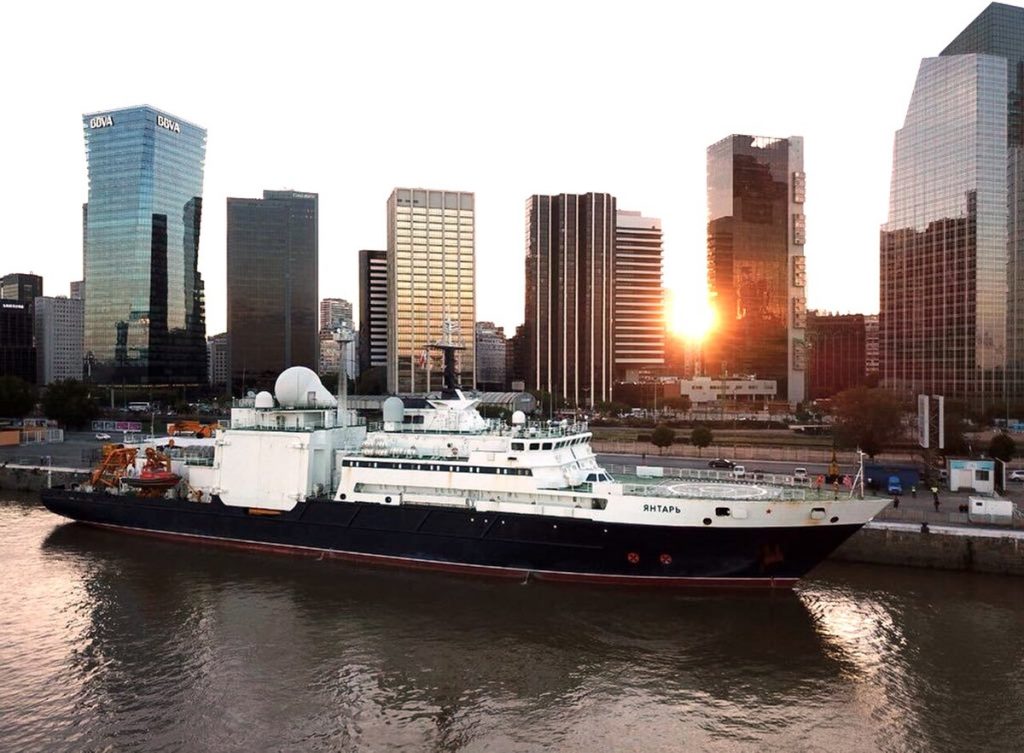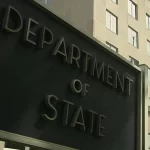Against the background of Russia’s negotiations with NATO and the OSCE, the NATO Allies’ infrastructure comes under attack. Therefore the Kremlin continues to search for vulnerabilities of the United States and its allies in the event of a major escalation and armed confrontation with the NATO bloc.
The outage on the world’s northernmost subsea communications cable occurred on January 7 but was only revealed to the public by Space Norway, who owns and maintains the technology, just yesterday. The disruption, which occurred on one of two fiberoptic cables, could prove disastrous as it means there is now only one connection between the mainland and Svalbard, with no backup available.
An undersea comms cable connecting Svalbard and mainland Norway has failed. The disruption could prove disastrous as there is now only one connection left. If the other cable fails, the island will be completely cut off from the mainland. The cables power a huge Arctic satellite station and bring internet to Svalbard. It comes as Britain’s most senior naval officer warned that Russia may look to cripple such vital undersea communication wires supporting the UK.

Russian submersibles, armed with hydraulic cutters attached to their hulls, would make short work of the hosepipe-thin cables. Alternatively, remotely operated vehicles (ROVs) fitted with cutters could also do the job.
A Russian vessel, designated as a serious threat, is the Yantar. It was detected near the current site of the incident back in 2016-2020, on a reconnaissance mission. There are also suggestions that Yantar’s submersibles could carry technology capable of tapping the cables.
The cables provide essential power for Space Norway to run the Svalbard Satellite Station (SvalSat), as well as enable broadband internet connection on the islands.
SvalSat’s Customers with their own installations include the European Organisation for the Exploitation of Meteorological Satellites (EUMETSAT), the National Aeronautics and Space Administration (NASA), the European Space Agency (ESA), and the National Oceanic and Atmospheric Administration (NOAA). The station also reads and distributes data from the Japanese Hinode solar research satellite. The facility has seen a large increase in smaller customers after 2004, when the Svalbard Undersea Cable System started providing a fiber Internet connection. Concessions for downloading are only issued to civilian satellites, yet some data has been indirectly used by armed forces. Journalist Bård Wormdal argued that SvalSat is used for military intelligence. The Norwegian Coastal Administration uses SvalSat to track the ships’ Automatic Identification System in Norwegian waters. The facility is also used by the Taiwanese National Space Organization’s Formosat-2.
The SvalSat site is located atop a mountainous ridge on Svalbard and consists of more than 100 satellite antennas vital for polar orbiting satellites. The site represents one of only two ground stations which can be download data from these types of satellites on each of the Earth’s rotations, making it a valuable asset.
Should the second cable fail before repairs are made, Svalbard’s residents and SvalSat will be effectively cut off from Norway.
The recent incident comes as Britain’s newly appointed chief of the defence staff, Admiral Sir Tony Radakin, earlier warned that Russia may look to cripple such vital undersea communications wires supporting the UK.
In an interview at the weekend, Tony Radakin said there had been ‘a phenomenal increase’ in Russian submarine activity over the past 20 years, adding: ‘Russia has grown the capability to put at threat those undersea cables and potentially exploit them.’
The fault in the cable, which runs from Longyearbyen in Svalbard to Andoeya on Norway’s north coast, was detected between 80 – 140 miles from Longyearbyen at a point where the cable runs from less than 0.2 miles deep to over 1.3 miles deep under the surface between the Greenland, Norwegian and Barents seas.
Svalbard is a group of islands within the Arctic Circle, 400 miles (640 kilometers) north of mainland Norway.
Svalbard did not escape diplomatic fallout following Russia’s annexation of Crimea in 2014. A row unfolded in 2015 when Russian Deputy Prime Minister Dmitry Rogozin made an unannounced visit to Svalbard despite being sanctioned by Norway for his part in the Ukraine conflict. In turn, Russia objected to a fact-finding visit by NATO parliamentarians in 2017. Russia condemns NATO’s involvement in Svalbard, claiming it undermines what Russia regards as the archipelago’s demilitarized status. Russia’s long-standing complaints include the integration of the islands into NATO’s command structure and visits by Norwegian warships and military cargo aircraft. The installation of scientific facilities, including Svalbard Radar (1996) and the Svalbard Satellite Station (1997), have provoked the greatest Russian ire, with perhaps justifiable objections. The Kremlin sees Svalbard as a potential target for offensive in case of military escalation.





